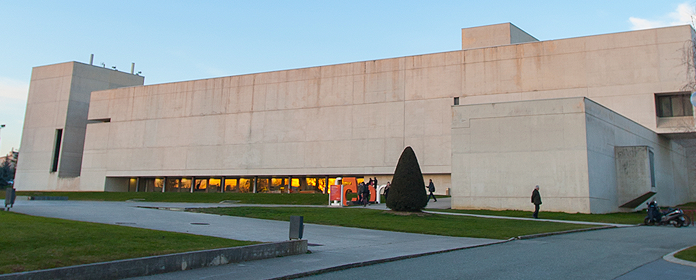How many memory models are there? A glossary collects them and sheds light on recent scientific discoveries
Researchers at the Institute for Culture and Society presented the main forms of memory, including sensory, short-term and long-term, in a Frontiers journal

FOTO: Manuel Castells
How many memory models are there? Researchers from the Mind-Brain Group of the Institute for Culture and Society (ICS) at the University of Navarra published a literature review that classifies and clarifies the different types of memory that are currently widespread in the scientific literature. The article was published in Frontiers in Pharmacology, the most cited open access journal in the area of Pharmacology and Pharmacy.
Francisco Güell, the Group’s coordinator, and Eduardo Camina, a project collaborator and pre-doctoral researcher within the School of Education and Psychology at the University of Navarra, authored the article.
The main forms of memory presented include sensory, short-term and long-term. The authors note that, "information about the world that surrounds us is first stored in sensory memory; short-term memory refers to the information processed in a short period of time. Long-term memory includes long-standing information that can be recovered consciously or unconsciously."
GlosaryThe article also includes a glossary that the researchers note is "essential for an overview and allows interested students and professionals to effectively address the latest discoveries related to memory." The glossary distinguishes the following terms:
-
Associative memory: refers to the storage and retrieval of information resulting from an association
-
Conceptual short-term memory/episodic buffer: this is a temporary storage system capable of integrating information from different sources that is probably controlled by the central executive.
-
Echoic memory: sensory memory that receives and processes auditory information.
-
Episodic memory: “involves the ability to learn, store, and retrieve information about unique personal experiences that occur in daily life. These memories typically include information about the time and place of an event, as well as detailed information about the event itself ” (Dickerson and Eichenbaum, 2010).
-
Explicit/declarative memory: refers to conscious memories of previously stored experiences, facts and concepts that are verifiable through a verbal reporting of them
-
Haptic memory: sensory memory that receives and processes information from the sense of touch.
-
Iconic memory: visual-sensory memory that receives and processes visual stimuli.
-
Implicit/non-declarative memory: this encompasses all unconscious memories, as well as certain abilities or skills.
-
Long-term memory: “refers to the unlimited, continuing memory store that can hold information over lengthy periods of time, even for an entire lifetime.” (Brodziak et al., 2013).
-
Non-associative memory: refers to newly learned behavior due to repeated exposure to a single stimulus.
-
Perceptual memory: memory acquired through the senses.
-
Priming: an effect where by exposure to certain stimuli influences the response to subsequently presented stimuli.
-
Procedural memory: a memory area involved in remembering executive and motor skills necessary to perform a task.
-
Semantic memory: refers to the memory of meanings, interpretations and concepts related to facts, information and general knowledge about the world.
-
Sensory memory: “Sensory memory is the capacity for briefly retaining the large amounts of information that people encounter daily” (Siegler and Alibali, 2005).




